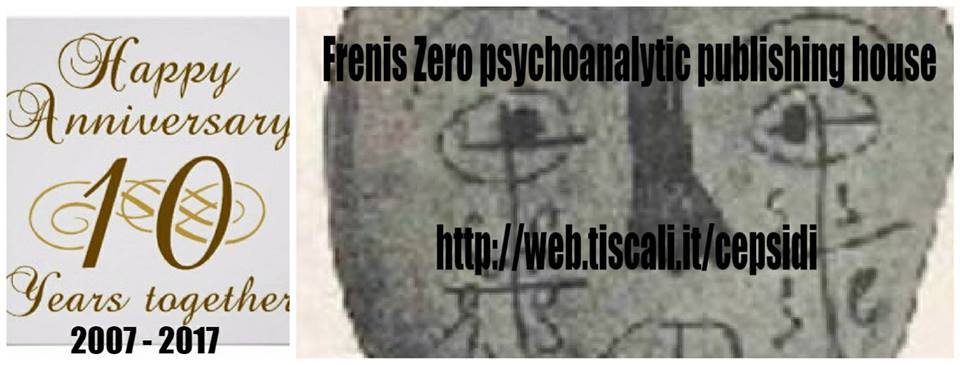|
A.S.S.E.Psi.
web site (History of Psychiatry and Psychoanalytic Psychotherapy
)
A.S.S.E.Psi.NEWS
(to subscribe our monthly newsletter)
Ce.Psi.Di. (Centro
di Psicoterapia Dinamica "Mauro Mancia")
Maitres
à dispenser (Our reviews about psychoanalytic congresses)
Biblio
Reviews (Recensioni)
Congressi
ECM (in italian)
Events
(our congresses)
Tatiana Rosenthal
and ... other 'psycho-suiciders'
Thalassa.
Portolano of Psychoanalysis
PsychoWitz - Psychoanalysis and Humor (...per ridere un po'!)
Giuseppe Leo's Art
Gallery
Spazio
Rosenthal (femininity and psychoanalysis)
Psicoanalisi
Europea Video
Channel
A.S.S.E.Psi. Video
Channel
Ultima uscita/New issue:
"My
Ideas Felt Like Outsize Clothes. A tale for Etty Hillesum"
(Second Edition)
by
Giuseppe Leo
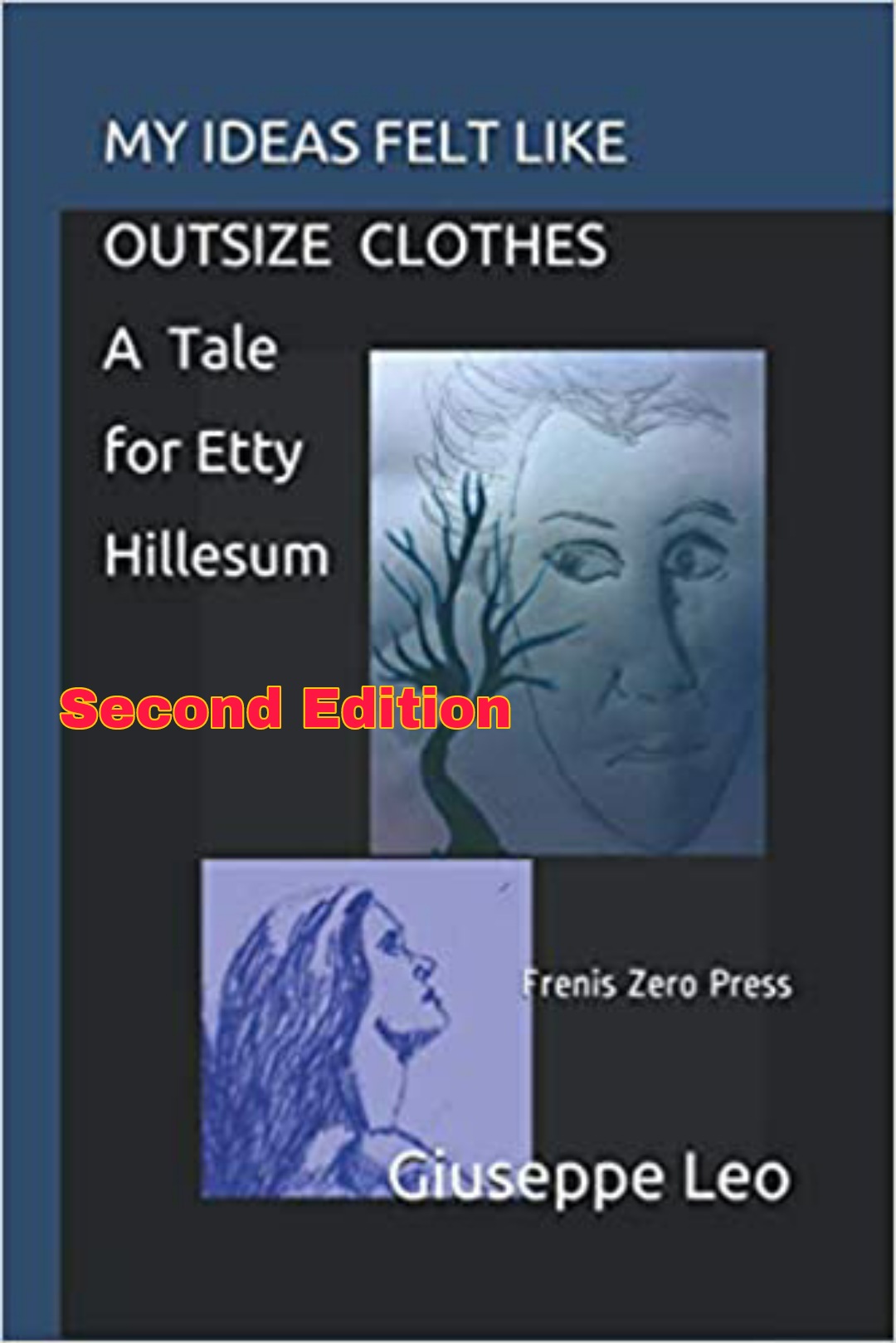
Editore/Publisher: Edizioni Frenis Zero
ISBN: 978-88-97479-28-4
Anno/Year: 2021
Pages: 128
Click
here to buy the book/Compra su Amazon

"Infant
Research and Psychoanalysis" (Third Edition) edited
by Giuseppe Leo
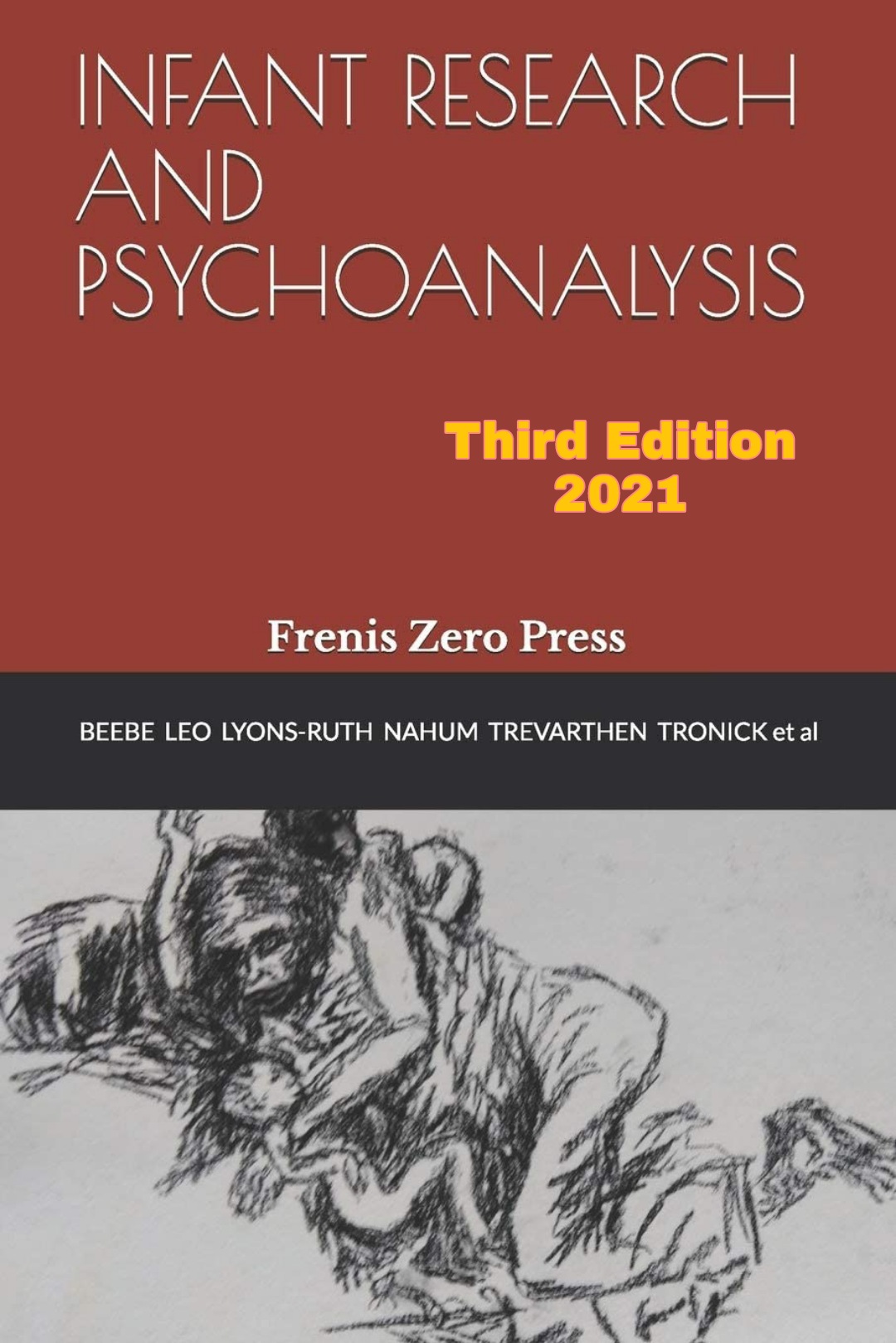
"
Edited
by Giuseppe Leo
Writings
by: B. Beebe K.
Lyons-Ruth J. P. Nahum D. Schechter
E. Solheim C.
Trevarthen E. Z. Tronick
L.
Vulliez-Coady
Publisher:
Frenis Zero
Collection:
Borders of Psychoanalysis
Year:
2021
Pages:
285
ISBN: 978-88-97479-24-6
Click
here to buy the book/Compra su Amazon

"Psychanalyse,
Lieux de Mémoire et Traumatismes Collectifs" (Third
Edition) edited by
Giuseppe Leo
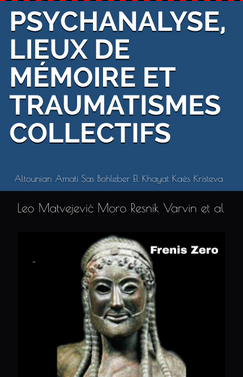
Writings by: J. Altounian, S. Amati Sas, W.
Bohleber, M. El Husseini, R. El Khayat, Y. Gampel R. Kaës, J.
Kristeva, G. Leo, A. Loncan, P. Matvejević, M.-R. Moro, S.
Resnik, S. Varvin
Editore/Publisher: Edizioni Frenis Zero
ISBN: 978-88-97479-22-2
Anno/Year: 2021
Pages: 546
Click
here to buy the book/Compra su Amazon

"Enactment
in Psychoanalysis" - Second Edition) edited by
Giuseppe Leo & Giuseppe Riefolo
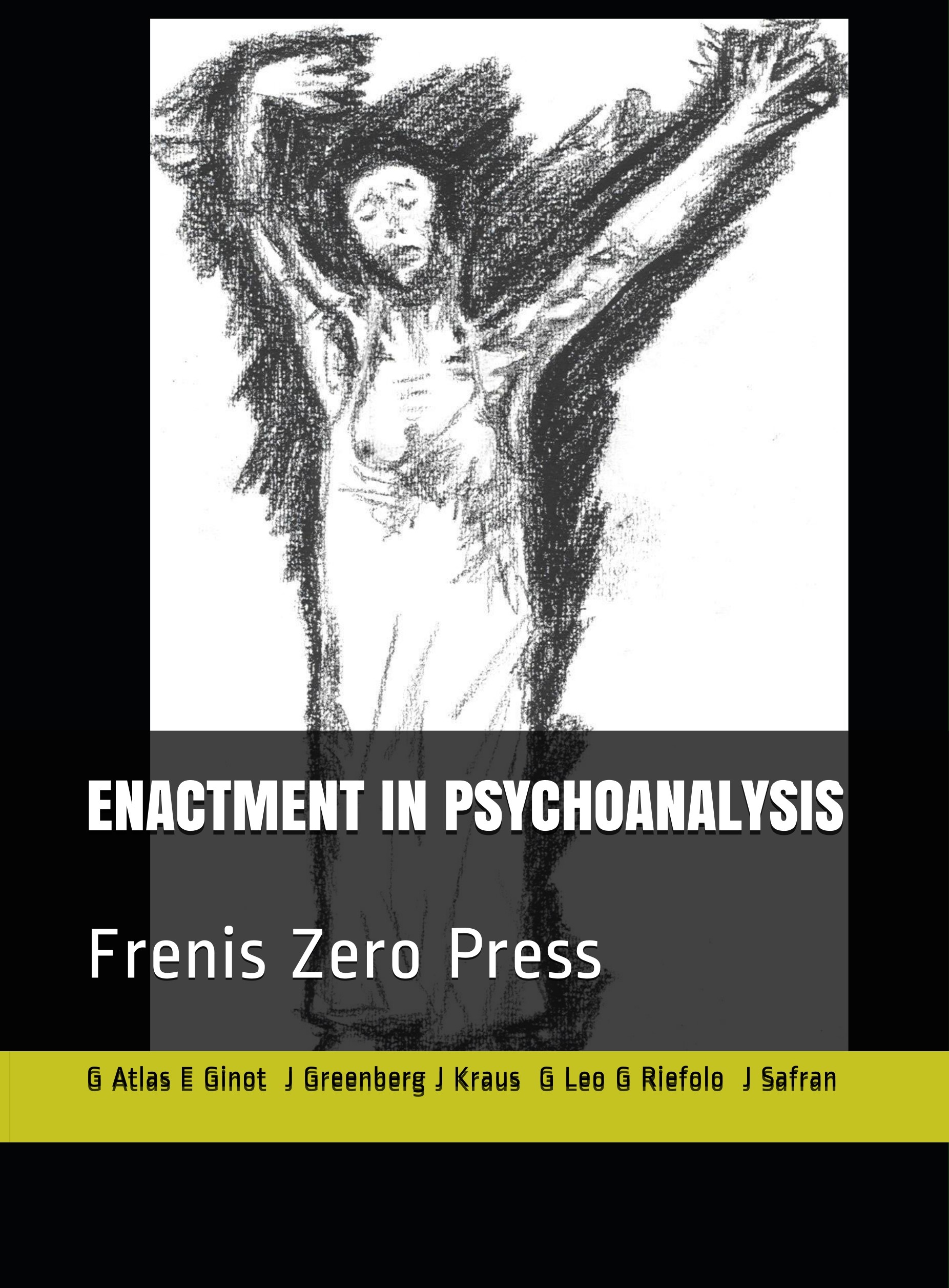
Edited
by Giuseppe Leo & Giuseppe Riefolo
Writings
by: G. Atlas E. Ginot J.R.
Greenberg J. Kraus J.D. Safran
Publisher:
Frenis Zero
Collection:
Borders of Psychoanalysis
Year:
2020
Pages:
333
ISBN: 978-88-97479-19-2
Click
here to buy the book/Compra su Amazon

"My
Ideas Felt Like Outsize Clothes. A tale for Etty Hillesum" by
Giuseppe Leo
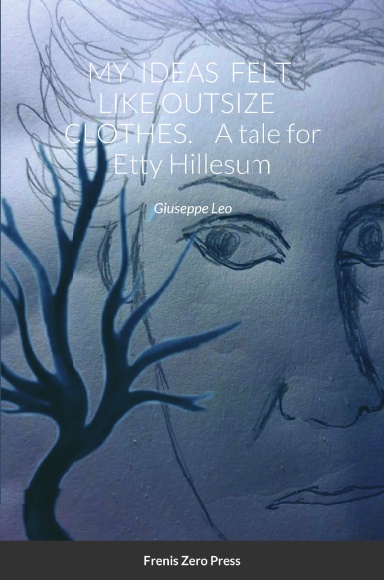
Editore/Publisher: Edizioni Frenis Zero
ISBN: 978-88-97479-33-8
Anno/Year: 2020
Pages: 122
Click
here to order the book/Ordina
su Lulu

"Environmental
Crisis and Pandemic. A Challenge for Psychoanalysis"
edited by Giuseppe Leo (Second
Edition)

Writings by: H. Catz, A. Ferruta,
M. Francesconi, P. R. Goisis, R. D. Hinshelwood, G.
Leo, N. McWilliams,
G. Riefolo, M. Roth, C.
Schinaia, D. Scotto Di Fasano, R. D. Stolorow
Editore/Publisher: Edizioni Frenis Zero
ISBN: 978-88-97479-37-6
Anno/Year: 2020
Pages: 312
Click
here to order the book/Ordina
su Lulu

Click
here to buy the book/Compra su Amazon

"Psychanalyse,
Lieux de Mémoire et Traumatismes Collectifs" sous
la direction de Giuseppe Leo
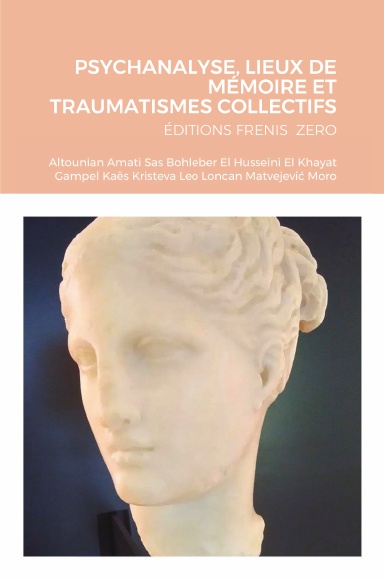
Writings by: J. Altounian, S. Amati Sas, W.
Bohleber, M. El Husseini, R. El Khayat, Y. Gampel R. Kaës, J.
Kristeva, G. Leo, A. Loncan, P. Matvejević, M.-R. Moro
Editore/Publisher: Edizioni Frenis Zero
ISBN: 978-88-97479-29-1
Anno/Year: 2020
Pages: 482
Click
here to order the book/Ordina
su Lulu

"Fear
of Lockdown. Psychoanalysis, Pandemic Discontents and
Climate Change"
edited by Giuseppe Leo
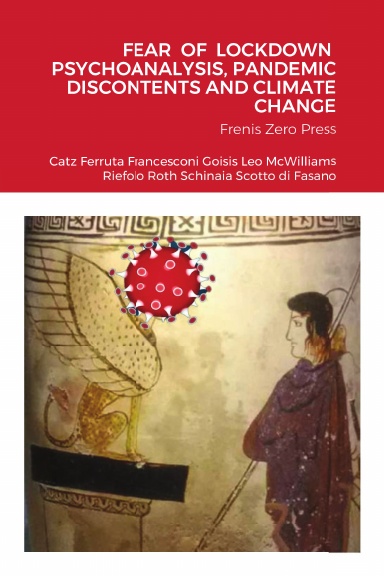
Writings by: H. Catz, A. Ferruta,
M. Francesconi, P. R. Goisis, G.
Leo, N. McWilliams,
G. Riefolo, M. Roth, C.
Schinaia, D. Scotto Di Fasano
Editore/Publisher: Edizioni Frenis Zero
ISBN: 978-88-97479-21-5
Anno/Year: 2020
Pages: 295
Click
here to order the book/Ordina
su Lulu

Click
here to buy the book/Compra su Amazon

"Rock
Music & Psychoanalysis"
Second Edition
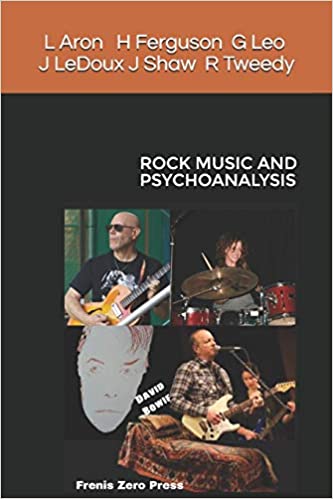
Edited
by: Giuseppe Leo
Authored
by/autori: Lewis Aron Heather
Ferguson Joseph LeDoux Giuseppe Leo John Shaw
Rod Tweedy
Editore/Publisher:
Edizioni Frenis Zero
Collection/Collana: Borders
of Psychoanalysis
Anno/Year:
2020
Pagine/Pages:
221
ISBN:978-88-97479-35-2
Click
here to buy the book/Compra su Amazon

"Essere
nella cura"

Authored
by/autori: Giacomo Di Marco & Isabella
Schiappadori
Editore/Publisher:
Edizioni Frenis Zero
Collection/Collana: Confini
della Psicoanalisi
Anno/Year:
2019
Pagine/Pages:
210
ISBN:978-88-97479-17-8
Click
here to order the book
"Enactment
in Psychoanalysis"
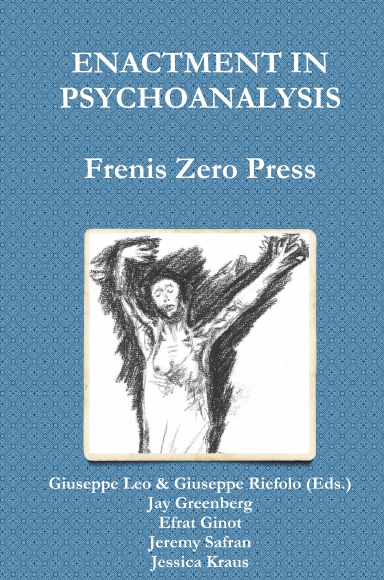
Edited
by Giuseppe Leo & Giuseppe Riefolo
Writings
by: E. Ginot J.R.
Greenberg J. Kraus J.D. Safran
Publisher:
Frenis Zero
Collection:
Borders of Psychoanalysis
Year:
2019
Pages:
326
ISBN: 978-88-97479-15-4
Click
here to order the book
"Infant
Research and Psychoanalysis"

Edited
by Giuseppe Leo
Writings
by: B. Beebe K.
Lyons-Ruth J. P. Nahum E. Solheim C.
Trevarthen E. Z. Tronick L.
Vulliez-Coady
Publisher:
Frenis Zero
Collection:
Borders of Psychoanalysis
Year:
2018
Pages:
273
ISBN: 978-88-97479-14-7
Click
here to order the book
"Fundamentalism
and Psychoanalysis"
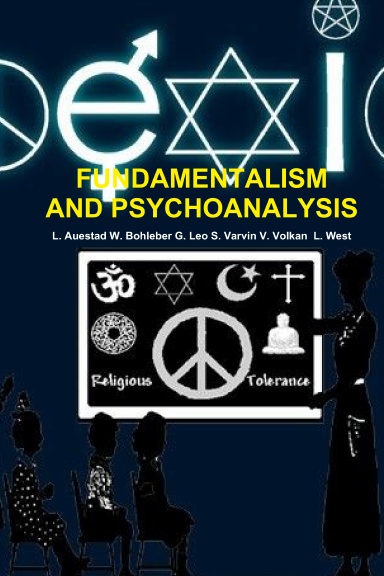
Edited
by Giuseppe Leo
Prefaced
by: Vamik D. Volkan
Writings
by: L. Auestad W.
Bohleber S. Varvin L. West
Publisher:
Frenis Zero
Collection:
Mediterranean Id-entities
Year:
2017
Pages:
214
ISBN: 978-88-97479-13-0
Click
here to order the book
"Psicoanalisi, luoghi della resilienza
ed immigrazione"

Edited
by/a cura di: Giuseppe Leo
Writings by/scritti di:
S.
Araùjo Cabral, L.
Curone,
M. Francesconi,
L.
Frattini,
S.
Impagliazzo,
D. Centenaro Levandowski, G. Magnani, M. Manetti, C. Marangio,
G. A. Marra e Rosa, M. Martelli,
M. R. Moro, R. K. Papadopoulos,
A. Pellicciari,
G. Rigon,
D.
Scotto di Fasano,
E. Zini, A. Zunino
Editore/Publisher: Edizioni Frenis Zero
Collection/Collana: Mediterranean
Id-entities
Anno/Year:
2017
Pagine/Pages:
372
ISBN:978-88-97479-11-6
Click
here to order the book
"Psicoanalisi in Terra Santa"

Edited
by/a cura di: Ambra Cusin & Giuseppe Leo
Prefaced by/prefazione
di:
Anna Sabatini Scalmati
Writings by/scritti di:
H. Abramovitch A. Cusin M. Dwairy
A. Lotem M.
Mansur M. P. Salatiello Afterword
by/ Postfazione
di:
Ch. U. Schminck-Gustavus
Notes by/ Note di: Nader Akkad
Editore/Publisher: Edizioni Frenis Zero
Collection/Collana: Mediterranean
Id-entities
Anno/Year:
2017
Pagine/Pages:
170
ISBN:978-88-97479-12-3
Click
here to buy the book
"Essere bambini a Gaza. Il trauma
infinito"

Authored
by/autore: Maria Patrizia Salatiello
Editore/Publisher: Edizioni Frenis Zero
Collection/Collana: Mediterranean
Id-entities
Anno/Year:
2016
Pagine/Pages:
242
ISBN:978-88-97479-08-6
Click
here to buy the book
Psychoanalysis,
Collective Traumas and Memory Places (English Edition)
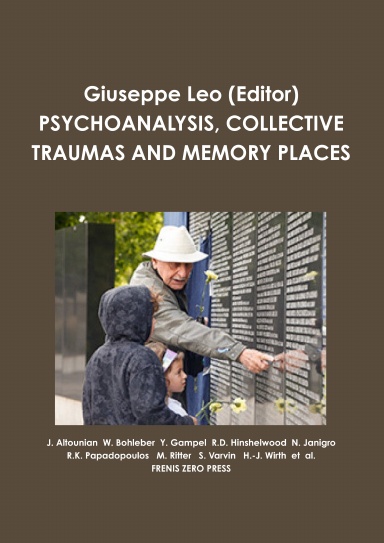
Edited
by/a cura di: Giuseppe Leo Prefaced by/prefazione
di:
R.D.Hinshelwood
Writings by/scritti di: J. Altounian
W. Bohleber J. Deutsch
H. Halberstadt-Freud Y. Gampel
N. Janigro R.K. Papadopoulos
M. Ritter S. Varvin H.-J. Wirth
Editore/Publisher: Edizioni Frenis Zero
Collection/Collana: Mediterranean
Id-entities
Anno/Year:
2015
Pagine/Pages:
330
ISBN:978-88-97479-09-3
Click
here to buy the book
"L'uomo
dietro al lettino" di
Gabriele Cassullodi
Gabriele Cassullodi
Gabriele Cassullo
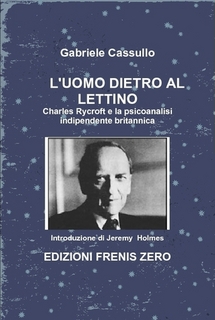
Prefaced
by/prefazione di: Jeremy
Holmes
Editore/Publisher: Edizioni Frenis Zero
Collection/Collana: Biografie
dell'Inconscio
Anno/Year:
2015
Pagine/Pages:
350
ISBN:978-88-97479-07-9
Click
here to order the book
"Neuroscience
and Psychoanalysis" (English Edition)

Edited by/a cura di: Giuseppe Leo
Prefaced by/prefazione
di: Georg Northoff
Writings by/scritti di: D. Mann A. N. Schore
R. Stickgold
B.A. Van Der Kolk
G. Vaslamatzis M.P. Walker
Editore/Publisher: Edizioni Frenis Zero
Collection/Collana: Psicoanalisi e neuroscienze
Anno/Year: 2014
Pagine/Pages: 300
ISBN:978-88-97479-06-2
Click
here to order the book
Vera
Schmidt, "Scritti su psicoanalisi infantile ed
educazione"

Edited by/a cura di: Giuseppe Leo
Prefaced by/prefazione
di: Alberto Angelini
Introduced by/introduzione di: Vlasta Polojaz
Afterword by/post-fazione di: Rita Corsa
Editore/Publisher: Edizioni Frenis Zero
Collana: Biografie dell'Inconscio
Anno/Year: 2014
Pagine/Pages: 248
ISBN:978-88-97479-05-5
Click
here to order the book
Resnik,
S. et al. (a cura di Monica Ferri), "L'ascolto dei
sensi e dei luoghi nella relazione terapeutica"

Writings by:A.
Ambrosini, A. Bimbi, M. Ferri,
G. Gabbriellini, A. Luperini, S. Resnik,
S. Rodighiero, R. Tancredi, A. Taquini Resnik,
G. Trippi
Editore/Publisher: Edizioni Frenis Zero
Collana: Confini della Psicoanalisi
Anno/Year: 2013
Pagine/Pages: 156
ISBN:978-88-97479-04-8
Click
here to order the book
Silvio
G. Cusin, "Sessualità e conoscenza"
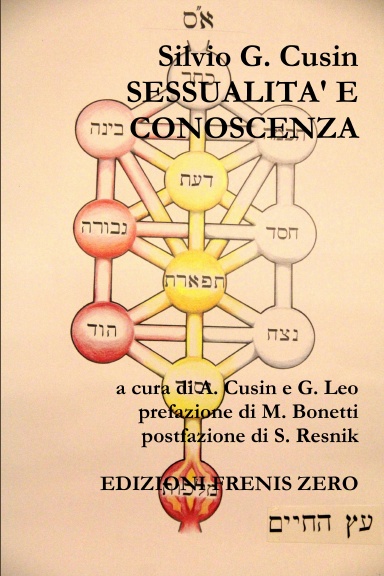
A cura di/Edited by: A. Cusin & G. Leo
Editore/Publisher: Edizioni Frenis Zero
Collana/Collection: Biografie dell'Inconscio
Anno/Year: 2013
Pagine/Pages: 476
ISBN: 978-88-97479-03-1
Click
here to order the book
AA.VV.,
"Psicoanalisi e luoghi della riabilitazione", a cura
di G. Leo e G. Riefolo (Editors)
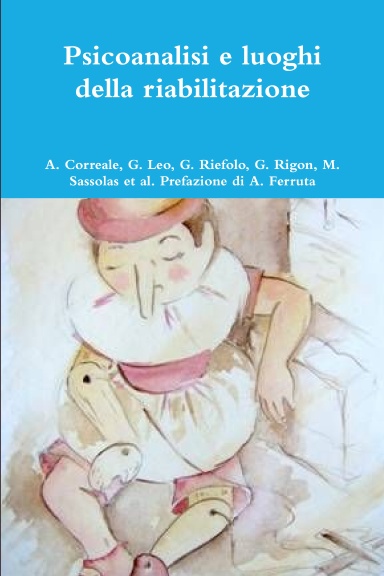
A cura di/Edited by: G. Leo & G. Riefolo
Editore/Publisher: Edizioni Frenis Zero
Collana/Collection: Id-entità mediterranee
Anno/Year: 2013
Pagine/Pages: 426
ISBN: 978-88-903710-9-7
Prezzo/Price:
€ 39,00
Click
here to order the book
AA.VV.,
"Scrittura e memoria", a cura di R. Bolletti (Editor)

Writings by: J.
Altounian, S. Amati Sas, A. Arslan, R. Bolletti, P. De
Silvestris, M. Morello, A. Sabatini Scalmati.
Editore/Publisher: Edizioni Frenis Zero
Collana: Cordoglio e pregiudizio
Anno/Year: 2012
Pagine/Pages: 136
ISBN: 978-88-903710-7-3
Click
here to order the book
AA.VV., "Lo
spazio velato. Femminile e discorso
psicoanalitico"
a cura di G. Leo e L. Montani (Editors)
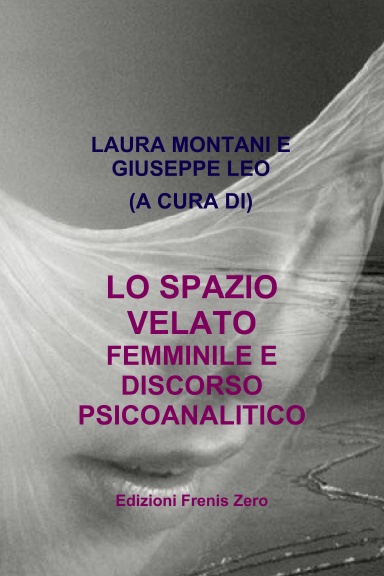
Writings by: A.
Cusin, J. Kristeva, A. Loncan, S. Marino, B.
Massimilla, L. Montani, A. Nunziante Cesaro, S.
Parrello, M. Sommantico, G. Stanziano, L.
Tarantini, A. Zurolo.
Editore/Publisher: Edizioni Frenis Zero
Collana: Confini della psicoanalisi
Anno/Year: 2012
Pagine/Pages: 382
ISBN: 978-88-903710-6-6
Click
here to order the book
AA.VV., Psychoanalysis
and its Borders, a cura di
G. Leo (Editor)
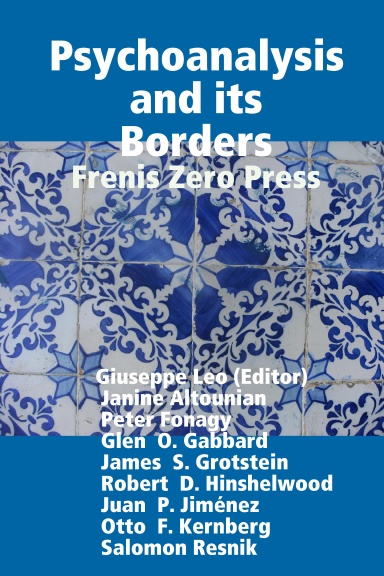
Writings by: J. Altounian, P.
Fonagy, G.O. Gabbard, J.S. Grotstein, R.D. Hinshelwood, J.P.
Jimenez, O.F. Kernberg, S. Resnik.
Editore/Publisher: Edizioni Frenis Zero
Collana/Collection: Borders of Psychoanalysis
Anno/Year: 2012
Pagine/Pages: 348
ISBN: 978-88-974790-2-4
Click
here to order the book
AA.VV.,
"Psicoanalisi e luoghi della negazione", a cura di A.
Cusin e G. Leo
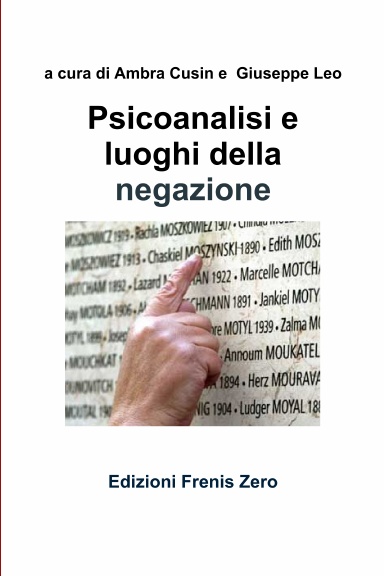
Writings by:J.
Altounian, S. Amati Sas, M. e M. Avakian, W. A.
Cusin, N. Janigro, G. Leo, B. E. Litowitz, S. Resnik, A.
Sabatini Scalmati, G. Schneider, M. Šebek,
F. Sironi, L. Tarantini.
Editore/Publisher: Edizioni Frenis Zero
Collana/Collection: Id-entità mediterranee
Anno/Year: 2011
Pagine/Pages: 400
ISBN: 978-88-903710-4-2
Click
here to order the book
"The Voyage Out" by Virginia
Woolf
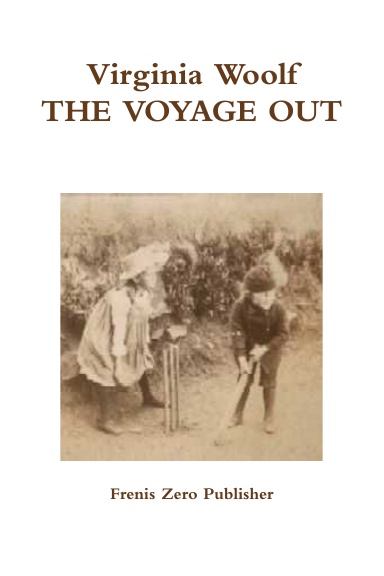
Editore/Publisher: Edizioni Frenis Zero
ISBN: 978-88-97479-01-7
Anno/Year: 2011
Pages: 672
Click
here to order the book
"Psicologia
dell'antisemitismo" di Imre Hermann

Author:Imre Hermann
Editore/Publisher: Edizioni Frenis Zero
ISBN: 978-88-903710-3-5
Anno/Year: 2011
Pages: 158
Click
here to order the book
"Vite soffiate. I vinti della
psicoanalisi" di Giuseppe Leo
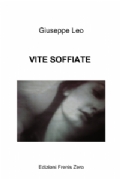
Editore/Publisher: Edizioni Frenis Zero
Edizione: 2a
ISBN: 978-88-903710-5-9
Anno/Year: 2011
Click
here to order the book
"La Psicoanalisi e i suoi
confini" edited by Giuseppe Leo
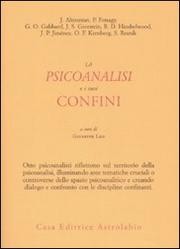
Writings by: J.
Altounian, P. Fonagy, G.O. Gabbard, J.S. Grotstein, R.D.
Hinshelwood, J.P. Jiménez, O.F. Kernberg, S. Resnik
Editore/Publisher: Astrolabio Ubaldini
ISBN: 978-88-340155-7-5
Anno/Year: 2009
Pages: 224
Prezzo/Price: € 20,00
"La Psicoanalisi. Intrecci Paesaggi
Confini"
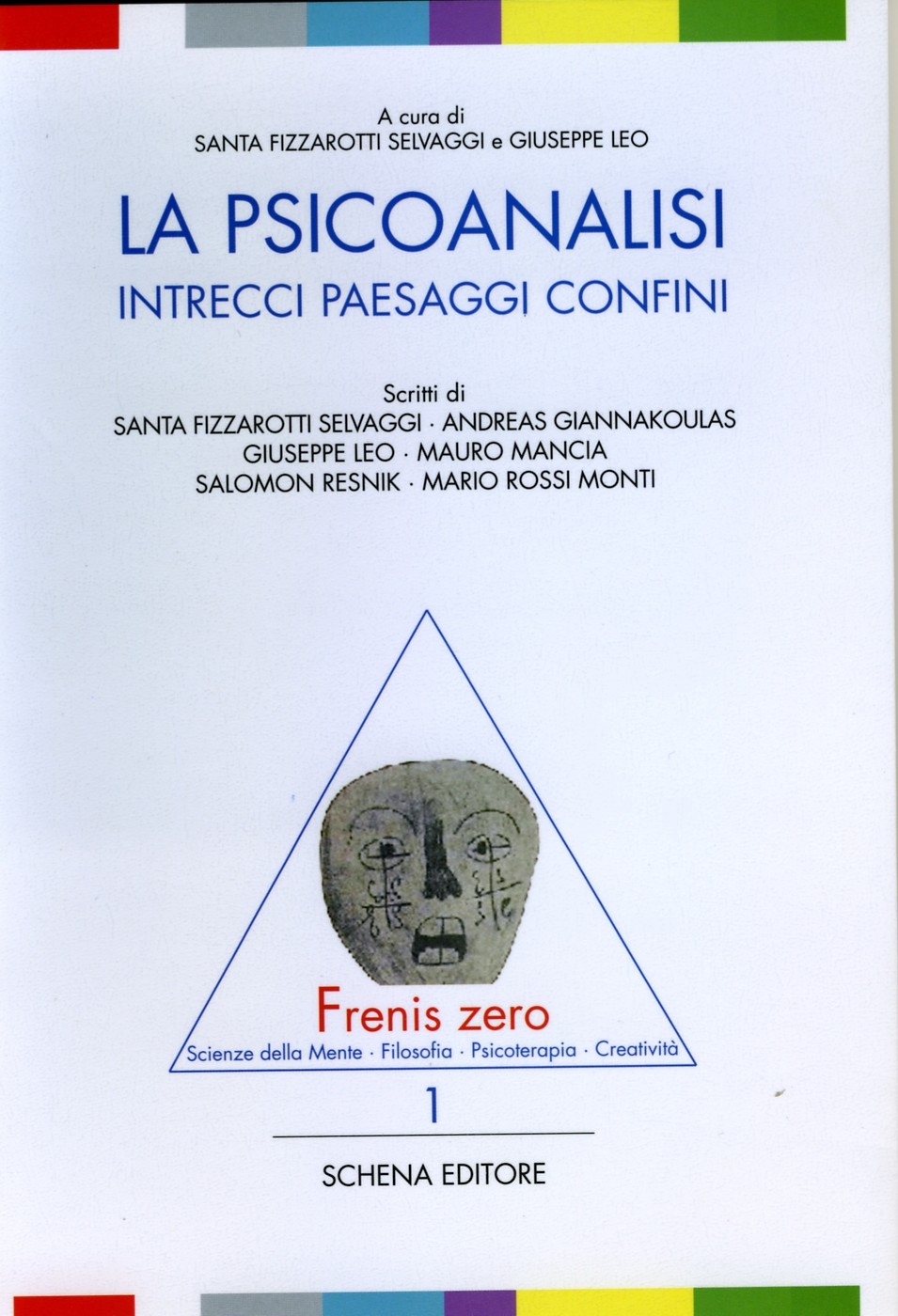
Edited by S. Fizzarotti Selvaggi, G.Leo.
Writings by: Salomon Resnik, Mauro Mancia, Andreas Giannakoulas,
Mario Rossi Monti, Santa Fizzarotti Selvaggi, Giuseppe Leo.
Publisher: Schena Editore
ISBN 88-8229-567-2
Price: € 15,00
Click here to order the
book |
|
Introduction
In
this study my aim is to provide some data about the neurobiological
changes that result from psychoanalytical psychotherapy as seen from
an integration perspective. The main issue is that there is a false
dichotomy in psychoanalysis, with its origins in the Cartesian
dualistic model of the mind, between predominantly "psychological"
and "biological" treatment.
As
I will endeavour to show, following Gabbard (2000), I believe there is
a neurobiologically informed psychoanalytical psychotherapy which
makes the division of mental health treatment methods artificial. I
will therefore begin by referring to the historical framework of Freud’s
and other psychoanalysts’ ideas and then move on to the empirical
basis of the relationship and finally to the theoretical models from
both the neurobiological and psychoanalytical standpoints, concluding
with the mechanisms by which psychoanalytical psychotherapy brings
about the neurobiological changes .
However,
I also consider these ideas to be in part speculative and more
extensive research needs to be undertaken in order to have a deeper
understanding of the links between psychotherapy and the
neurobiological changes induced thereby.
Historical
Background
Freud
has bequeathed us a discipline, which he considered to be in a state
of permanent evolution, with ample knowledge of the human mind but
nevertheless hypothetical and open to future revision. With reference
to these factors I would like to mention in support of my argument,
three studies which help relate psychoanalysis to neurobiology.
The
first is the article "On
Aphasia" (Freud, 1891) which for some authors (Solms,
1986, 1998; Solms & Solms, 2000) represents the most important
attempt thus far to link the beginnings of psychoanalysis to Freud’s
earlier career as a neurologist and neuroscientist. This study
introduces the concept of:
-
object
representation,
-
the
idea that the psychic
is a process . . . parallel to the physiological, (Freud,
1891)
-
the
structural independence of psychological facts with regard to any
kind of anatomical localisation,
-
the
explanation of dreams from the concept of regression, as
formalised in "The
Interpretation of Dreams",
-
the
existence of an active unconscious which enters into a dynamic
relationship with the conscious ego.
From
then on Freud adopted the Jacksonian model of the mind and
psychopathology (the second principle of neurobiological development
is referred to later).
The
second refers to some of the ideas expressed in the "Project
for a Scientific Psychology", (Freud, 1895) such as
the concept of the ego as a neuronal network and, in the field
of neurophysiology, the possibility of the existence of synapse
(at that time called contact barriers) two years prior to the
formalisation of this concept by the English physiologist Sherrington
(Mancia, 1987, Schore, 1997).
Finally I should like to mention "Remembering,
Repeating and Working-Through", (Freud, 1914) in which
Freud gives us to understand that that which we do not remember tends
to repeat itself over and over again in transference: in this sense he
comments:"... we
may say that the patient does not remember anything of what he has
forgotten and repressed, but acts it out. He reproduces it not as a
memory but as an action; he repeats it, without, of course, knowing
that he is repeating it".
In
my opinion, Freud here brilliantly anticipates modern studies
about different memory types, that is to say, the field of
procedural or implicit memory not available for conscious recollection
and responsible for the learning of motor abilities and
of certain unconscious processing of affective information (we
must remember that for Freud the patient ". . .repeats
without knowing he is repeating"), such memories
working through mechanisms located in the basal ganglia, cerebellum
and amygdala (motor learning and conditioned fear respectively) (Amini,
Lewis, Lannon, Louie, Baumbacher, Mc Guiness, et al, 1996; Davis,
2001; Kandel, Schwartz, Jessell, 1995). In any event we should be
cautious not to directly extrapolate this knowledge of the
neurobiology of the memory with the characteristics and properties of
the unconscious system: timelessness, free movement of the cathexis
and the absence of contradiction. Therefore I consider that the study
of the implicit memory could provide information about how the
contents of the unconscious arise, but not how this system works:
In
synthesis, if we were to study Freud’s theoretical position regarding
psychoanalysis as a natural science we could define the
following periods:
-
In
the "Project"
and in "On
Aphasia", he is trying to approximate
psychoanalysis, which is still in its infancy, to a natural
science in which mental phenomena are trying to establish a
neurobiological correlation.
-
In
the second period dominated by the studies "The
Interpretation of Dreams" (Freud, 1900) and the
"Introductory
Lectures on Psycho-analysis" in 1916-1917, he
discards any kind of anatomical location for the mental apparatus
at that time and considers that psychoanalysis should establish
itself on its own merits and not based on other disciplines.
Consider for example this passage: "We
can avoid any possible abuse of this method of representation by
recollecting that ideas, thoughts and psychical structures in
general must never be regarded as localised in organic elements of
the nervous system but rather, as one might say, between them"
( Freud, 1900)
-
In
"The Claims
of Psycho-Analysis to Scientific Interest" (Freud,
1913) he returns to biology and states; "We
have found it necessary to hold aloof from biological
considerations during our psycho-analytic work and to refrain from
using them for heuristic purposes, so that we may not be misled in
our impartial judgement of the psycho-analytic facts before us.
But after we have completed our psycho-analytic work we shall have
to find a point of contact with biology, and we may rightly feel glad
if that contact is already assured at one important point or
another."
4.
Toward the end of his life in "An Outline of
Psychoanalysis"
(Freud, 1938) he returns to the search for reconciliation and
considers "The future may teach us to exercise a
direct influence, by
means of particular chemical substances, on the amounts of
energy and their distribution in the neural apparatus."
Subsequently,
other authors affirmed this orientation. To mention all of them
would detract from the main purpose of this study, but among them
for example we would like to mention Sandler (1987) who posits
that psychoanalytical theory has no clear boundaries and in some
instances is interwoven with various aspects of general psychology
and biological sciences.
Grotstein.
(1995, 1999) suggests that advances in neurochemistry and
psychopharmacology have opened a window for the psychoanalytical
study of serious mental disorders under more stable conditions.
This author affirmed that the psychoanalyst has to be sufficiently
aware of the advances in neurobiology and psychopharmacology and
especially of neurocognitive research in order to understand his
patients’ suffering. However he posits a "dual-track"
concept which allows for an interplay between the unconscious,
neurobiology and early trauma in an intrasubjective and
intersubjective matrix.
The
Empirical Basis of the Changes Resulting from Psychoanalytic
Psychotherapy and Examples from Cognitive Therapy
Basically,
I refer to the following:
-
The
changes in the neuroanatomical, metabolic and
neurophysiological parameters resulting from cognitive
behaviour therapy on obsessive-compulsive patients (OCD).
-
Changes
in dream patterns in patients with affective disorders.
-
The
modifications induced by psychoanalytical psychotherapy in
measuring the serotonergic function in borderline patients.
-
The
changes resulting from group psychotherapy in the survival of
patients with metastatic breast cancer.
According
to the authors, in a group of OCD patients, cognitive behaviour
therapy and drug treatment using fluoxetine resulted in a
diminishing of activity in the head of the right caudate nucleus
as measured by positron emission tomography (PET). The
normalisation of activity at this anatomic level is correlated to
the improvement in the obsessive-compulsive symptoms as measured
on a scale. The authors hypothesise that both treatments can
contribute toward an improvement in the inhibitory processes which,
when dysfunctional (the thalamus function fails to act as a "filter"
blocking the excess of thought) let an excess of thought
originating in the prefrontal cortex flood the cognitive process (Baxter,
Schwartz, Bergman, Szuba, Guze, Mazziotta, et al, 1992).
The
study of dreams: the cognitive behaviour therapy produced a
modification in the dream structure of a group of patients with
depression. The authors observed significant improvements in the REM
latency, the REM density and efficacy of the dream, reminding
us of the importance of sleeping and dreaming for the processing
of affective laden memories and the neurocognitive process. (Thase,
Fasiczka, Berman, Simons, Reynolds, 1998).
Some
Finnish authors (Kuikka, Tiihonen, Lehtonen, 1998) have concluded that
psychoanalytical psychotherapy in borderline patients produced changes
in the serotonin transporter of the presynaptic terminals. They
evaluated two patients with a diagnosis of BPD and commorbility with
moderate to severe major depression, both, prior to treatment, having
diminished levels in the serotonin transporters in the median
prefrontal cortex and thalamus as measured by single photon emission
computed tomography (SPECT), and compared them to a group of healthy
volunteers. In the patient who underwent psychoanalytical
psychotherapy without medication for a year, the values of the binding
sites normalised when compared to the patient with the same diagnosis
but without treatment. The role of the serotonin transporters in the
physiopathology of borderline disorder remains to be seen with greater
precision, or rather whether the changes are due to an improvement in
the depressive symptoms.
A
group of patients with metastatic breast cancer who underwent group
psychotherapy treatment showed a survival rate 18 months longer than
those patients who did not undergo treatment. This result could be due
to an improvement in the illness confrontation mechanisms, through
greater supportive relationship. The authors speculate that the
neuroendocrine and immune systems provide important links between
emotional factors and the course of the cancer (Spiegel, Karma, Bloom,
Gotteheil, 1989).
Framework
for the Study of the Relationship between Psychoanalytical
Psychotherapy and Neurobiology.
The
concepts which can mainly assist us in this point are taken from:
-
Neurobiological
research: the general principles of cerebral development, the
plasticity of the neuronal processes and animal
research in the field of attachment, which proves useful
when taking into account the relational aspect of psychotherapy.
-
Psychoanalysis:
the transference theory, the identification and
introjection processes, the evolutionary scheme of M. Mahler,
Winnicott’s concept of the holding environment, and from
self-psychology, the notion of the regulatory function of the
self-objects (Kohut, 1977). These are factors which together
should interact to achieve a gradual mental representation of the
self, the object and a series of
affects which form a coherent bridge between them (Jacobson,
1964).
It
is understood that psychoanalytical psychotherapy could work along the
lines of Schore (1994) as a new learning experience which facilitates
the growth of psychological structures
which in turn enable social-affective information to be stored
and processed. Such experiences could persist in adulthood and would
be facilitated by neuronal
plasticity processes: changes in the functional properties
of a synapse as the result of use (van Praag, Kempermann, Gage, 2000).
Psychoanalytical
psychotherapy represents a new and enriched environment if we
understand by this a complex combination of social and inanimate
stimulation. Modern neurobiological research considers that this
environment, like other learning experiences, promotes the development
of gliogenesis, neurogenesis and synaptic growth in the neocortex (Schore,
1994, Gross, 2000).
It
should be remembered that recent research tends to modify the dogma
that ‘neurons could not be reproduced’ and there is
sufficient evidence that even in adult life neurogenesis processes
can occur, especially in the hippocampus which intervenes in the
memory and learning processes (Bailey, Giustetto, Yan-You, Hawkins,
Kandel, 2000).
Gould,
Tanapat, Rydel, Hastings, (2000) consider that the enriched
environment in guinea pigs promotes the growth of new granular cells
in the hippocampus. Estrogens and exercise in rodents facilitate the
growth of new cells, fundamentally in
the dentate gyrus of the hippocampus. These effects are produced
through a reduction in the neurotransmission of excitatory amino acids
like n-methyl-d-aspartate (NMDA) and of a more gradual answer to
stress, which results in a lesser sensitivity
of the granule cells to the effect of adrenal steroids. Nevertheless,
precaution is suggested in generalising the research on rodents and
primates since:
-
the
experiments were performed in controlled environments which
introduce a stress variable due to relative deprivation,
-
the
laboratory conditions differ from those of the natural habitat
of the animals,
-
the
exact life of the recently created cells is not known.
From
the point of view of neurotrophic factors, the enriched environment
produces an increase in the genetic expression of the Neural Growth
Factor (NGF), the Brain Derived Growth Factor (BDGF) and the
Neurotrophic Factor Derived from the glial cells (NFGC). The function
of these factors is to produce neuronal remodelling, synaptic growth
and the elimination of
connections which no longer fulfill any purpose (van Praag,
Kempermann, Gage, 2000). With regard to neurotransmission, the
enriched environment increases the cholinergic1
neurotransmission (NT) in the hippocampus, as well as the opioid and
monaminergic neurotransmitters. All of these together intercede in the
learning mechanisms, synaptic plasticity and the neurogenesis process.
Post
(1997), posits that the lack of stimulus in the social environment
could produce down regulation of the synapse, neuronal
retraction and finally neuronal death.
In
synthesis, the concept of enriched environment derived from
neurobiology could harmonise with the psychoanalytical concept of
holding environment (Winnicott, 1965) and with the role of play as a
generator of neurotrophic changes (Schore, 1994).
Psychoanalytical
psychotherapy experience could therefore, through the plasticity
mechanisms, contribute to neuronal growth in the frontal limbic areas
of the right brain, which would
have an affect regulating function. Psychotherapy therefore
becomes a regulating and homeostasis factor which replaces
the identification with bad objects by other new representations
having a higher degree of maturity.
There
are a series of principles of brain development which were
investigated by Schore (1994) which further enable us to understand
the neurobiological changes resulting from psychotherapy.
The
first of these teaches that cerebral growth and development are
produced at certain critical moments and are found to be influenced
by the social
environment. The cerebral structure is created day by day
and is related to the activity of the primary carer, i.e. cerebral
development is partly sensitive to experience and depends on it.
According to Greenspan (cited in Schore’s extensive monograph) there
might be an environmental instigator
for this growth in which specific conditions for the development
of self-regulating and attachment systems could be given and similarly
an inhibiting environment which prevents this.
The mother or primary carer fulfils regulating functions which
foster greater neuronal growth in cortical limbic areas, especially in
the right brain related to the aforementioned systems. Mahler’s
(1994) evolution model enables us to relate a child’s psychological
development to some neurobiological theories. During the practising
period of 12-18 months the formation
of the socio-affective transaction with the mother begins, through
which visual affective (non verbal) interaction increases the
feeling of elation, the exploring and play activity of the child- The
dyad bond generates high levels of feelings of pleasure and excitement
which can be observed in the infant as grandiose and omnipotent
behaviour. If one looks at this state from the neurobiological
standpoint, it appears to be the result of sympathetic hyperactivity
mechanisms measured by the activation of the dopaminergic system that
originate in the ventral tegment area and project into the limbic
system. Therefore, we have here another example of an enriched
environment instigator of neuronal growth (Schore, 1994).
The
second principle, which follows a Jacksonian model, considers that the
brain develops in stages and follows a hierarchic pattern. The higher
hierarchic level is determined by the prefrontal cortex which,
according to Luria (2000), has a development which is dependent on the
social environment. It begins when the infant is one year old and ends
when he/she is about eighteen.
The
third principle indicates that the genetic systems which "programme"
the cerebral development are activated and influenced
during the postnatal period. According to Schore the mother’s
behaviour is seen as an external environment which measures
the genetic differences and becomes a neuroendocrine regulator.
It is worth mentioning here that a psychoanalyst such as Grotstein
(1995) considers that the self-object
regulating function, which
in the first instance is the mother and then the analyst in the
transference, never disappears but rather is transformed and matures.
This regulating function, together with the "holding environment"
in the ideas of Winnicott, provides
healthy emotional experiences and is exemplified as being the
object relation (attachment) which becomes an important factor for
neuronal development.
The
fourth and perhaps the most important principle to clarify the
psychotherapy-neurobiology relationship posits that the social
environment changes during infant development and induces
cerebral restructuring processes. During this phase changes
are produced in the mother-child dyad by which the first
goes from being a figure which provides very primary care linked
to survival, towards a change related to the socialisation processes,
which, according to Schore, from a neurobiological standpoint are
based on the development of the prefrontal cortex.
In
synthesis, I believe that acquiring a language provides a good example
for understanding the interaction between the innate and that acquired
through the environment in the sense that one is born with the
capability of learning a language, thus the potential therefor is to
be found in the DNA, but the capability to use that language and be
able to communicate is learned socially (Chomsky, 1965; Eisenberg,
1995).
To
sum up, cerebral
development and therefore in part, that of the personality has to pass
through successive and perhaps permanent processes of organisation,
disorganisation and restructuring, until it begins to form
more stable structures. I
suggest, while trying to avoid oversimplification, that these processes
are equivalent to the regression mechanisms and subsequent
reorganisation, steps which are necessary to the consolidation of the
personality.
Transference
and Neurobiology
We
know from Freud (1912) about the double meaning of transference by
which one is transformed into a kind of resistance and the other
proves to be an important tool for analytical treatment. We also
remember that for Freud, transference has a repetitive aspect (it is
worth asking ourselves whether the mental representations and the
sensory experience register, both by means of neuronal pathways, do not
configure the neurobiological basis for transference) and represents
yet another way by which the unconscious reveals itself.
Here again we find Kandel’s ideas about procedural memory
useful. Freud declares: "The
unconscious impulses do not want to remembered in the way the
treatment desires them to be, but endeavour to reproduce themselves in
accordance with the timelessness of the unconscious and its capacity
for hallucination".
Taking
these concepts into account, one of Levin’s studies contributes some
interesting ideas about the relationship
between
transference interpretation and neurobiology. In this author’s view,
the concepts of memory priming and working memory, make it possible to
consider transference within the
cognitive and neurophysiological field. The transference interpretations
that have a highly metaphoric component allow us to interrelate
sensory processes and memory complexes (Levin, 1997)
This
occurs as follows:
-
The
relationship chain which can be established in the analytical
treatment using transference as a tool, enables us to connect
neuronal networks which are specifically related to the processing
of sensory information (note the importance of this concept in
relation to the working of the unconscious and its capacity to
show itself by means of hallucinations).
-
Transference
interpretation enables the mind to connect several levels of its
own experience simultaneously.
-
The
possibility of activating working memory** mechanisms.
-
Transference
understood as a form of learning enables a greater number of
neuronal networks to be brought together, which in turn allow for
a more adequate processing of affective and cognitive information.
In synthesis we can regard the transference interpretation as a
learning mechanism which operates under two mechanisms:
-
Through
the tendency of repetitive compulsion being able to apprehend
mechanisms and dominate them so that they do not become completely
new information which floods the mental apparatus,
-
In
the context of a teaching-learning dyad (analyst/ patient), the
relation with the analyst acts as a new model of identification
which allows for the modification of rigid and stereotyped
patterns and schemes into others having a higher degree of
plasticity which represent more evolved and integrated schemes.
Following Levin’s model we can consider that this integration
model and changes in level based on transference interpretation
permit a change from those philogenetically older (primitive forms
of mental function) levels to those which are more flexible and
evolved (more mature forms of mental function).In this way, by
means of transference, the brain creates a hierarchical database
‘that makes emotional sense of the world of human relations.’
Attachment
as a Connecting Bridge between Psychoanalysis and Neurobiology
The
concept of attachment was defined by Bowlby (Bowlby, 1969;
Fonagy, Target, Gergely, 2000) as being an internal work model (mental
representations of the self and objects related by a
series of affective states), which implies the child registering the
memories of its proximity and contact experiences with its carer.
Attachment
represents an open socioaffective system which fulfils homeostatic
functions, regulating the emotional experience and creating the
bases for future experiences of security with the objects.
In
this sense, Hofer (1984), in a study on the biological implications of
the process of grief, speculates that social interaction might be a
regulator of homeostatic rhythms and mechanisms (attachment). The
author posits whether social interaction in human beings is capable of
synchronising biological rhythms and also whether the internal
representations of the object are like a neural network of endowed
qualities of affect.
However, arising from these ideas, I believe it is possible to find a
new connection between the psychoanalytical concept of object
relations and neuroscientific research in the field of biological
study of attachment and affects (Sandler and Sandler, 1998).
The
principal characteristics of Bowlby’s model make it possible to
understand how attachment is the template upon which all subsequent
relations are built. These characteristics are as follows:
-
All
other forms of relationship emanate from this prototype (transference)
-
They
remain stable throughout the person’s life
-
Attachment
functions outside conscious experience
-
They
are resistant to change
From
the neurobiological viewpoint, attachment has been studied
in animals through different behaviour, for example
-
The
beginning and keeping up of maternal behaviour,
-
Separation
distress vocalisation which represents a measure of ultrasonic
vocalisations emitted by rat pups as a way of expressing the
stress of early separation,
-
The
formation of links between pairs (social attachment) which enables
reproduction, accompaniment, social dominance and grooming.
It
appears that the interaction between various neurotransmitters and
neuropeptides is decisive for the beginning and keeping up of
attachment. Insel and Winslow (1998) consider that neurotransmitters
intervene in the separation-attachment processes
which produce anxiety effects such as serotonin. For example,
drugs which increase the synaptic availability of
this neurotransmitter, such as chlomipramine, fluoxetine and
citalopram, tend to diminish the number of vocalisations emitted
through stress. Norepinefrine and neuropeptide, like opioids,
vasopressin (avp) and the hormone oxytocine (oxy), which have
receptors with a high concentration in areas of high dopaminergic
innervation such as subtantia nigra and pallidum, are also involved in
the attachment processes. (Insel, Winslow, 2001). In this sense, oxy
in interaction with estrogens appears to be important in expediting
the commencement of maternal behaviour in rats. Oxy administered to a
nulliparous rat initiates the motivational changes essential for
motherly care. Another function of this neurohormone appears to be
related to pair-bond formation and facilitates the development of
preference for a particular partner (Insel, Winslow, 1999).
A
series of cerebral
circuits, called ‘care circuits’ by Panksepp (1998),
have been studied in guinea
pigs. In this instance one is dealing with intrinsic
cerebral circuits which promote nutritional and care behaviour on the
part of the mother, and occasionally on the part of the father.
Neuroanatomically speaking, they comprise the Bed Nucleus of the Stria
terminalis (BNST) and the Anterior Cinguli Cortex. For this author it
seems probable that the social links and maternal behaviour have
arisen from philogenetic evolutionary processes and ‘it
is now widely accepted that all mammals inherit psychobehavioural
systems to mediate social bonding as well as various other social
emotions, ranging from intense attraction to separation-induced
despair.’ In short, oxy-avp (especially in females),
opioids, prolactine (prl) and social learning intervene at the
beginning and for the maintenance of maternal behaviour, the social
learning concept being important insofar as the oxy can only exercise
its action if it is found to be complemented by social links.
The
endogenous opioids whose receptors are widely distributed in the
limbic system, seemingly intervene in pair-bond formation, some
researches having proved that the administration of agonist opioids
diminish the distress induced by separation experiences (Insel,
Winslow, 1999). Pleasure and pro-social activities, such as
cleanliness, games and social exchange, activate circuits related to
opioids and oxy and, although a very increased opioid activity could
inhibit the maternal capacity of the child carer, in general this
opioid increase becomes a pro-social behaviour inhibitor as may be
seen, for example, in extreme cases such as autism, a disorder where a
slight improvement may be obtained from the administration of
antagonist opioids.
In
short, for the various attachment processes the following
neuroanatomic structures appear to be necessary: philogenetically
older regions of the brain, for example the Nucleus Accumbens, BNST,
Anterior Cingulate Cortex, Preoptic Area Dorsomedial Thalamus and the
Olfactory Bulb (in rodents) and the mesolimbic path which also appears
to be involved in the motivational aspects of behaviour. In humans it
seems that those pathways which mediate the hedonic response to psycho
stimulants, evolve as neuronal systems for attachment (Inselt, Winslow,
2001).
Neurochemically
an intact serotonergic system is required and the interaction of this
neurotransmitter with type 5HT1a and 5HT1b receptors set in motion a
chain of events with lasting consequences as a response to the stress
mediated by glucocorticoid
receptors in the hippocampus; oxy which fulfils functions
related to maternal attachment, enabling a union between environmental
stimuli and memories of maternal relationship, opioids, vasopressin,
prl and dopamine through type D2 receptors which, according to recent
research in animals, are found to be related to the preferred choice
of mate (see Insel’s study).
I
consider that psychoanalytic psychotherapy can
function as a new attachment link, like a central organiser that
enables the restructuring of cortical and limbic connection patterns
with an affect regulating function. These concepts are
supported by neurobiological research. Panksepp considers that there
is a ‘window’ of opportunities in species like the human being by
which the attachment processes may occur variably in time, in other
words that they are not ‘all or nothing’ processes and therefore
can reappear in adults and produce the aforementioned changes.
Synthesis
and Conclusions
What
will the action mechanism in psychoanalytical psychotherapy be like?
-
Psychotherapy
can function as a learning experience that facilitates the growth
of psychic structures which provide
for the storage and processing of socio-affective information.
This latter concept could become clearer if we consider part of a
quotation from the last Nobel Prize winner for Medicine, Eric
Kandel, who said: ‘insofar
as psychotherapy or counselling is effective and produces
long-term changes in behaviour it presumably does so through
learning, by producing changes in gene expression that alter the
strength of synaptic connections and structural changes that alter
the anatomical pattern of interconnections between nerve cells of
the brain,’ (Kandel, 1998).
-
The
therapeutic relationship should be able to reverse the
misattunement processes which are produced in the dyadic
mother-child relationship. The analyst has to strive for
this using the affective processes within the framework of
transference-countertransference.
-
In
the context of a prolonged relationship with the therapist, it
is possible to internalise identifications which allow the emergence
and development of adaptive mechanisms. It is in this sense that
Lewis (2000) considers that clinical and empirical studies which
support the idea that mental growth
is based on the development of a strong affective bond with
others to be important and when the inevitable interruptions or
alterations of these links occur they can be repaired.
-
Transference
as a principal tool for change during treatment may be seen in the
neurodynamic sense as being a property emerging from the memory
system to code and
store attachment patterns and the socio-affective processing
of early relationships. In this sense one can understand and
relate the concept that the Kleinian school gives to transference
that the origin of the same is in the first
stages of object relationship (Klein, M. 1991).
-
The
relationship with the therapist promotes the development of the
prefrontal cortex and limbic areas, especially in the right brain,
and the reconnection of cortical and limbic circuits in that same
hemisphere, in this way providing for the replacement of old
pathological identifications
by new, more mature ones. This might be possible since
according to Post, there could be a neurodynamic representation of
the object in neuronal circuits and networks, i.e. for this author,
the presence of
new
objects could produce a synaptic remodelling based on the previously
mentioned plasticity mechanism through long-term neurophysiological
potenciation processes and neuronal facilitation.
6.
Psychoanalytic experience may contribute to the neuronal growth in the
prefrontal areas of the right brain through the neuronal plasticity
mechanism which is considered to be continuing to mature even in an
adult (the
window of opportunities).
However, the affective experience which manifests itself in
transference can induce structural changes in the form of a new
pattern of neuronal growth in the aforementioned places.
7.
In this way, psychoanalytical psychotherapy in very disturbed patients
can be seen as a new enriched environment
which permits affective regulation and a greater impulse
control, thus contributing to an improvement in the object
relationships which are almost always perturbed in these patients.
8.
The hypotheses mentioned under this heading permit the understanding
as to how the neurobiological changes resulting from psychoanalytical
psychotherapy help borderline patients to help themselves from feeling
they are "orphans
from reality" as Grotstein says, i.e. the alterations
produced by precocious traumas, which in the case of borderline
personality disorder are derived from family violence and sexual abuse,
can be reverted.
Conclusions
The
ideas expressed in this paper should be considered tentative
because firstly, it is difficult to extrapolate research performed
on animals to the human being, and secondly, the studies of cerebral
changes induced by psychotherapy are still speculative
and should be confirmed.
Taking
these limitations into account, we can in any event consider that
brain research and its relation to the aforementioned psychoanalytical
concepts could become a bridge between the brain and the mind without
falling into oversimplifications
or simple correlation to cerebral activity.
Lastly,
I believe that the hypothesis of the British empiricist philosophers,
among them Locke, regarding the human mind as a tabula rasa should be
submitted to criticism and investigation, likewise the continental
Kantian philosophy about the innate in our personality, since day by
day research continues into how the brain and the mind are socially
constructed from environmental experiences (Eisenberg, 1995; Quartz,
1999).
No
one is fitted to begin the materialistic study of the brain unless he
has a good knowledge of psychology.
- John Hughlings Jackson (1931)
References
- Amini, F., Lewis, T., Lannon, R., Louie, A.,
Baumbacher, G., Mc
Guiness, T. et al. (1996) Affect, Attachment, Memory:
Contributions Toward Psychobiologic Integration. Psychiatry,
59: 213-240.
- Bailey, C., Giustetto, M., Yan-You, H., Hawkins,
R., Kandel, E. (2000) Is Heterosynaptic Modulation Essential for
Stabilising Hebbian Plasticity and Memory?. Nature
Reviews Neuroscience, 1: 11-21.
- Baxter, L., Schwartz, J., Bergman, K., Szuba, M.,
Guze, B., Mazziotta, J. et al. (1992), Caudate Glucose Metabolic
Rate Changes with Both Drug and Behaviour Therapy for
Obsessive-Compulsive Disorder. Arch
Gen Psychiatry, 49: 681-689.
- Bowlby, J. (1969) Attachment and Loss, vol. 1:
Attachment. London: Hogarth Press and The Institute of
Psycho-Analysis.
- Chomsky, N. (1965) Aspects of the Theory of Syntax,
Cambridge, Massachusetts: The MIT Press.
- Davis, J. (2001) Revising Psychoanalytic
Interpretations of the Past: An Examination of Declarative and
Non-declarative Memory Processes. The
International Journal of Psychoanalysis, 82: 449-462.
- Deitz, J. (1992) Self-psychological approach to
posttraumatic stress disorder: neurobiological aspects of
transmuting internalisation. J
Am Acad Psychoanal, 2: 277-93.
- Eisenberg, L. (1995) The Social Construction of the
Human Brain. Am J
Psychiatry, 152: 1563-1576.
- Fonagy, P. Target, M. Gergely, G. (2000) Attachment
and Borderline Personality Disorder: a Theory and Some Evidence. The
Psychiatric Clinics of North America, 23: 103-123.
- Freud, S. (1891) On Aphasia. New York:
International Universities Press.
- (1895)
A Project for a Scientific Psychology. Standard Edition, I
London: The Hogarth
Press, 1966.
- (1900) The Interpretations of Dreams. Standard
Edition, 4 & 5. London: The
Hogarth Press, 1953.
- (1912) The Dynamics of transference, Standard
Edition, 12. London: The
Hogarth Press and The Institute of Psycho-analysis, 1958.
- (1913)
The Claims of Psychoanalysis to Scientific Interest, Standard
Edition, 13. London: The
Hogarth Press, 1966.
- (1914) Remembering, repeating and working through (further
recommendations on the technique of Psycho-analysis), Standard
Edition, 12. London: The
Hogarth Press and The Institute of Psycho-analysis, 1958.
- (1916-17) Introductory Lectures in Psychoanalysis,
Standard Edition, 16 part 3. London: The
Hogarth Press, 1966.
- (1980) An Outline of Psycho- Analysis, Standard
Edition, 23. London: The
Hogarth Press, 1966.
- Gabbard, G. A. (2000) Neurobiologically Informed
Perspective on Psychotherapy. British
Journal of Psychiatry, 177: 117-122.
- Gould, E., Tanapat, P. Rydel T., Hastings N. (2000)
Regulation of Hippocampal Neurogenesis in Adulthood. Biol
Psychiatry, 48:715-720.
- Gross, Ch. (2000) Neurogenesis in the adult brain. Nature
Reviews Neuroscience, 1: 67-73.
- Grotstein, J. (1995) Orphans of the "Real"
I: Some Modern and Post-modern Perspectives on the Neurobiological
and Psychosocial Dimensions of Psychosis and other Primitive
Mental Disorders.
Bulletin of the Menninger Clinic, 59: 287-311.
22. Grotstein, J.
(1999) The fate of the Unconscious in Future Psychotherapy. Am
J Psychotherapy, 53: 52-59.
23. Hofer, M. (1984) Relationships as Regulators: A
Psychobiologic Perspective on Bereavement. Psychosomatic
Medicine, 46: 183-197.
24. Insel, T. Winslow J. (1998) Serotonin and
Neuropeptides in
Affiliative Behaviours. Biol
Psychiatry, 44: 207-219.
25. (1999) The Neurobiology of Social Attachment.
In: Neurobiology of Mental Illness, Edited by Charney, S., Nestler, E.
& Bunney, B. New York & Oxford: Oxford
University Press, 1999: 880-891.
26. (2001) The Neurobiology of Attachment. Nature
Reviews Neuroscience, 2: 129-136.
27. Jackson, J. H. (1931) Selected writings of John
Hughlings Jackson, Vols. I & II, London: Hodder
& Stoughton.
28. Jacobson, E. (1964) The Self and the Object
World. New York: International
Universities Press.
29. Kaler, S., Freeman, B. (1994) Analysis of
Environmental Deprivation: Cognitive and Social Development in
Romanian Orphans. J
Child Psychol Psychiat., 35: 769- 781.
30. Kandel, E., Schwartz, J. Jessell T. (1995)
Essentials of Neural Science and Behaviour, Stamford, Connecticut: International
Edition. Appleton & Lange.
31. Kandel E. (1998) New Intellectual Framework for
Psychiatry. Am J of
Psychiatry, 155: 457-469.
32. Klein, M. (1991) Envidia y Gratitud y Otros
Trabajos, 57- 66. Mexico: Paidós.
33. Kohut, H. (1977) The Analysis of the Self: A
systematic Approach to the Psychoanalytic Treatment of Narcissistic
Personality Disorders. New York: International
Universities Press.
34. Kuikka; J., Tiihonen, J., Lehtonen, J. (1998)
Change in Monoamine Transporter Density Related to Clinical Recovery:
A Case-Control Study. Nord
J Psychiatry, 52: 39-44.
35. Levin, F. (1997) Integrating some mind and brain
views of transference: the phenomena. JAPA,
45: 11121-1151.
36. Lewis, J. (2000) Repairing the Bond in Important
Relationships: A Dynamic for Personality Maturation. Am
J of Psychiatry, 157: 1375-1378.
37. Luria, A. (2000) Las Funciones Corticales
Superiores del Hombre. Mexico: Fontamara, Third Edition.
38. Mahler, M. (1994) Separation-Individuation. The
Selected Papers of Margaret Mahler. Northvale, New Jersey and London: Jason
Aronson.
39. Mancia, M. (1987) Il Sogno come Religione della
Mente. Roma-Bari: Laterza
& Figli.
40. Panksepp,
J. (1998) Affective Neuroscience, The Foundations of Human and
Animal Emotions. Oxford, New York: Oxford
University Press.
41. Post, R., Weiss S. (1997) Emergent Properties of
Neural Systems: How Focal Molecular Neurobiological Alterations
Can Affect Behaviour. Development
and Psychopathology, 9: 907-929.
42. Panksepp, J.(1999) Emotions as Viewed by
Psychoanalysis and neuroscience: An Exercise in Consilience. Journal
of Neuro-Psychoanalysis, 1: 15-38.
43. Quartz, S. (1999) The Constructivist Brain. Trends
in Cognitive Science, 3: 48-57.
44. Sandler, J. (1987) From Safety to Superego.
Selected Paper of Joseph Sandler. New York, London: The
Guilford Press.
45. Sandler, J. Sandler, A. M. (1998) Internal
Objects Revisited. London: Karnac Books.
46. Schore,
A. (1994) Affect Regulation and The Origin of the Self.
Hillsdale, New Jersey, Hove UK: Lawrence
Erlbaum Associates.
47. Schore, A. (1997) A Century After Freud’s
Project: Is a Rapprochement Between Psychoanalysis and Neurobiology at
Hand?. JAPA,
45: 807-839.
48. Solms, M. Saling, M. (1986) On Psychoanalysis
and Neuroscience: Freud’s Attitude to the Localizationist Tradition.
International Journal
of Psycho-Analysis, 67:397-415.
49. Solms, M. (1998) Before and After Freud’s
Project. Neuroscience of The Mind on The Centennial of Freud’s Project
for a Scientific Psychology. Annals
of The New York Academy of Sciences, 843: 1-11.
50. Solms-Kaplan, K., Solms, M. (2000) Clinical
Studies in Neuro-Psychoanalysis. London & New York: Karnac Books.
51. Spiegel, D., Karma, H., Bloom, J., Gotteheil, E.
(1989) Effect of
Psychosocial Treatment on Survival of Patients with Metastatic
Breast Cancer. The
Lancet, 2: 888-891.
52. Thase, M., Fasiczka, A. Berman, S., Simons, A.,
Reynolds, Ch. (1998)
Electroencephalographic Sleep Profiles before and After
Cognitive Behaviour Therapy of Depression. Arch
Gen Psychiatry, 55: 138-144.
53. van Praag, H., Kempermann, G., Gage, F. (2000)
Neural Consequences of Environmental Enrichment. Nature
Reviews Neuroscience, 1: 191-199.
54. Winnicott, D. (1965), The
Maturational process and the facilitating environment: Studies in the
Theory of Emotional development. New York: International
Universities Press.
XXXXXXXXXXXXXXXXXXX XXXXXXXXXXXXXXXXXXX XXXXXXXXXXXXXXXXXXX XXXXXXXXXXXXXXXXXXX XXXXXXXXXXXXXXXXXXX XXXXXXXXXXXXXXXXXXX XXXXXXXXXXXXXXXXXXX XXXXXXXXXXXXXXXXXXX XXXXXXXXXXXXXXXXXXX XXXXXXXXXXXXXXXXXXX XXXXXXXXXXXXXXXXXXX XXXXXXXXXXXXXXXXXXX XXXXXXXXXXXXXXXXXXX XXXXXXXXXXXXXXXXXXX XXXXXXXXXXXXXXXXXXX XXXXXXXXXXXXXXXXXXX XXXXXXXXXXXXXXXXXXX XXXXXXXXXXXXXXXXXXX XXXXXXXXXXXXXXXXXXX XXXXXXXXXXXXXXXXXXX XXXXXXXXXXXXXXXXXXX XXXXXXXXXXXXXXXXXXX XXXXXXXXXXXXXXXXXXX XXXXXXXXXXXXXXXXXXX XXXXXXXXXXXXXXXXXXX XXXXXXXXXXXXXXXXXXX XXXXXXXXXXXXXXXXXXX XXXXXXXXXXXXXXXXXXX XXXXXXXXXXXXXXXXXXX XXXXXXXXXXXXXXXXXXX XXXXXXXXXXXXXXXXXXX XXXXXXXXXXXXXXXXXXX XXXXXXXXXXXXXXXXXXX XXXXXXXXXXXXXXXXXXX XXXXXXXXXXXXXXXXXXX XXXXXXXXXXXXXXXXXXX XXXXXXXXXXXXXXXXXXX XXXXXXXXXXXXXXXXXXX XXXXXXXXXXXXXXXXXXX XXXXXXXXXXXXXXXXXXX XXXXXXXXXXXXXXXXXXX XXXXXXXXXXXXXXXXXXX XXXXXXXXXXXXXXXXXXX XXXXXXXXXXXXXXXXXXX XXXXXXXXXXXXXXXXXXX XXXXXXXXXXXXXXXXXXX XXXXXXXXXXXXXXXXXXX XXXXXXXXXXXXXXXXXXX XXXXXXXXXXXXXXXXXXX XXXXXXXXXXXXXXXXXXX XXXXXXXXXXXXXXXXXXX XXXXXXXXXXXXXXXXXXX XXXXXXXXXXXXXXXXXXX XXXXXXXXXXXXXXXXXXX XXXXXXXXXXXXXXXXXXX XXXXXXXXXXXXXXXXXXX XXXXXXXXXXXXXXXXXXX XXXXXXXXXXXXXXXXXXX XXXXXXXXXXXXXXXXXXX XXXXXXXXXXXXXXXXXXX XXXXXXXXXXXXXXXXXXX XXXXXXXXXXXXXXXXXXX XXXXXXXXXXXXXXXXXXX XXXXXXXXXXXXXXXXXXX XXXXXXXXXXXXXXXXXXX XXXXXXXXXXXXXXXXXXX XXXXXXXXXXXXXXXXXXX XXXXXXXXXXXXXXXXXXX XXXXXXXXXXXXXXXXXXX XXXXXXXXXXXXXXXXXXX XXXXXXXXXXXXXXXXXXX XXXXXXXXXXXXXXXXXXX XXXXXXXXXXXXXXXXXXX XXXXXXXXXXXXXXXXXXX XXXXXXXXXXXXXXXXXXX XXXXXXXXXXXXXXXXXXX XXXXXXXXXXXXXXXXXXX XXXXXXXXXXXXXXXXXXX XXXXXXXXXXXXXXXXXXX XXXXXXXXXXXXXXXXXXX XXXXXXXXXXXXXXXXXXX XXXXXXXXXXXXXXXXXXX XXXXXXXXXXXXXXXXXXX XXXXXXXXXXXXXXXXXXX XXXXXXXXXXXXXXXXXXX XXXXXXXXXXXXXXXXXXX XXXXXXXXXXXXXXXXXXX XXXXXXXXXXXXXXXXXXX XXXXXXXXXXXXXXXXXXX XXXXXXXXXXXXXXXXXXX XXXXXXXXXXXXXXXXXXX XXXXXXXXXXXXXXXXXXX XXXXXXXXXXXXXXXXXXX XXXXXXXXXXXXXXXXXXX XXXXXXXXXXXXXXXXXXX XXXXXXXXXXXXXXXXXXX XXXXXXXXXXXXXXXXXXX |
|
|
|
|
|
|
|
|
|
|
|
|
|
|
|
|
|
|
|
|
|
|
|
|
|
